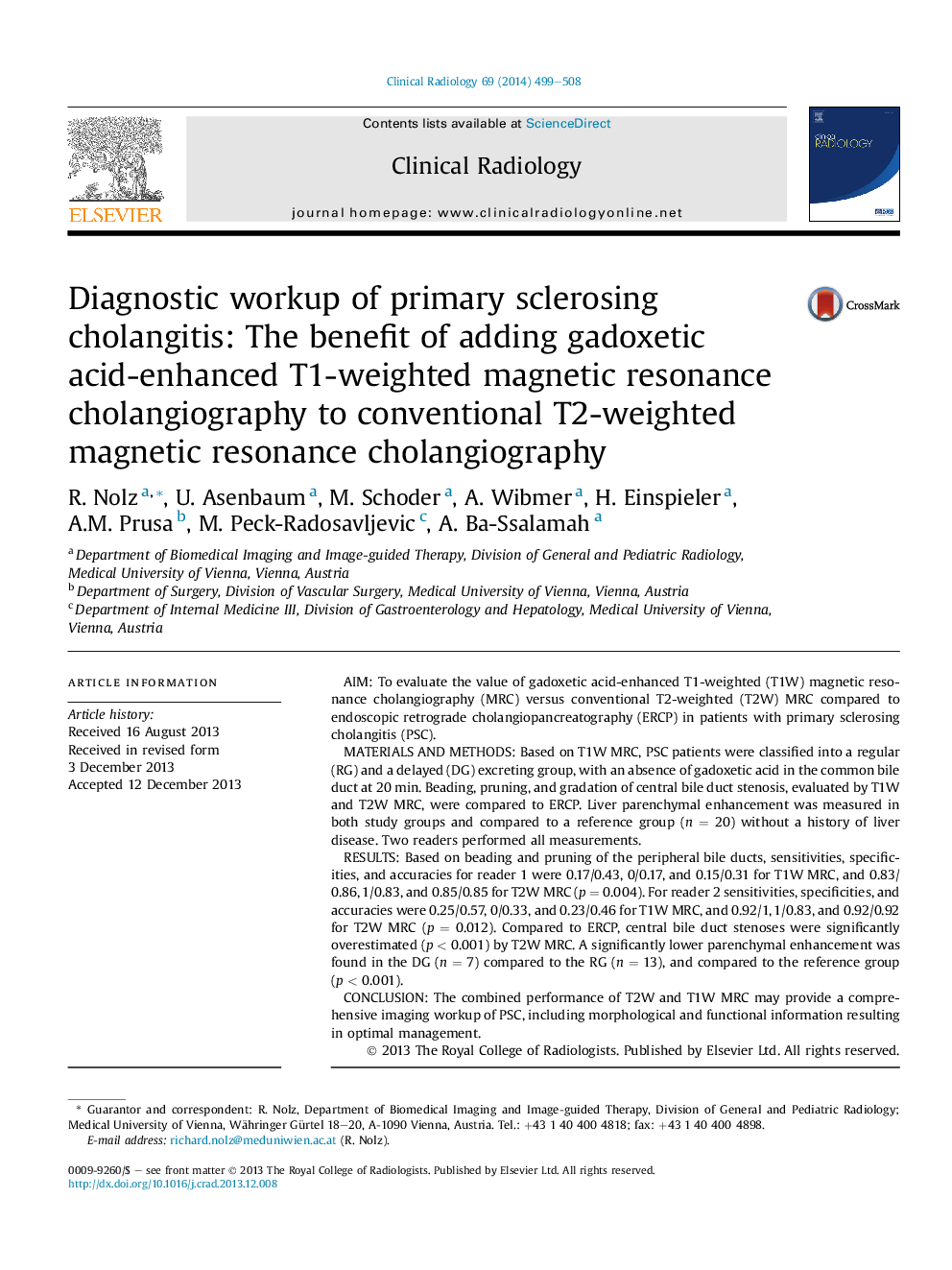| Article ID | Journal | Published Year | Pages | File Type |
|---|---|---|---|---|
| 3982343 | Clinical Radiology | 2014 | 10 Pages |
AimTo evaluate the value of gadoxetic acid-enhanced T1-weighted (T1W) magnetic resonance cholangiography (MRC) versus conventional T2-weighted (T2W) MRC compared to endoscopic retrograde cholangiopancreatography (ERCP) in patients with primary sclerosing cholangitis (PSC).Materials and methodsBased on T1W MRC, PSC patients were classified into a regular (RG) and a delayed (DG) excreting group, with an absence of gadoxetic acid in the common bile duct at 20 min. Beading, pruning, and gradation of central bile duct stenosis, evaluated by T1W and T2W MRC, were compared to ERCP. Liver parenchymal enhancement was measured in both study groups and compared to a reference group (n = 20) without a history of liver disease. Two readers performed all measurements.ResultsBased on beading and pruning of the peripheral bile ducts, sensitivities, specificities, and accuracies for reader 1 were 0.17/0.43, 0/0.17, and 0.15/0.31 for T1W MRC, and 0.83/0.86, 1/0.83, and 0.85/0.85 for T2W MRC (p = 0.004). For reader 2 sensitivities, specificities, and accuracies were 0.25/0.57, 0/0.33, and 0.23/0.46 for T1W MRC, and 0.92/1, 1/0.83, and 0.92/0.92 for T2W MRC (p = 0.012). Compared to ERCP, central bile duct stenoses were significantly overestimated (p < 0.001) by T2W MRC. A significantly lower parenchymal enhancement was found in the DG (n = 7) compared to the RG (n = 13), and compared to the reference group (p < 0.001).ConclusionThe combined performance of T2W and T1W MRC may provide a comprehensive imaging workup of PSC, including morphological and functional information resulting in optimal management.
